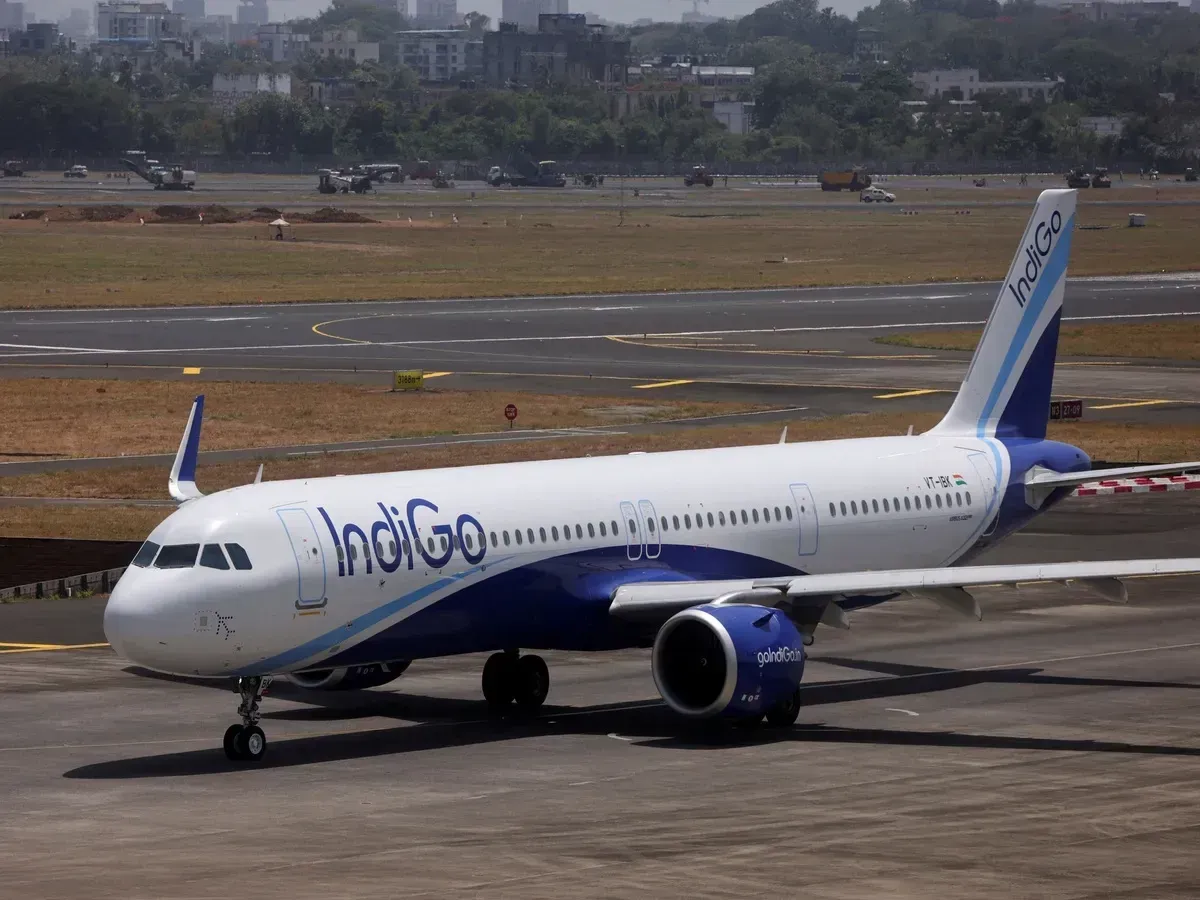Market News
IndiGo shares surge 3.5% as airline raises capacity guidance for FY26; all you need to know from Q2 earnings

4 min read | Updated on November 06, 2025, 10:18 IST
SUMMARY
The company anticipates a slight increase in costs with the rollout of the second phase of the revised flight duty time limitation (FDTL) norms for pilots
Stock list

From the beginning of the year, IndiGo shares have rallied 25%. | Image: Shutterstock
The budget airline reported a net loss of ₹2,581.7 crore for the quarter ended September 30, 2025 (Q2 FY26), owing to the forex impact. The company had posted a loss of ₹986.7 crore in the year-ago period.
At 9:55 AM, IndiGo shares were seen trading at ₹5,782 apiece on the National Stock Exchange, rising 2.57%.
Over the last five trading sessions, shares of the airline have gained 1%, while for six months’ time, they have climbed 8%. From the beginning of the year, IndiGo shares have rallied 25%. Its market capitalisation stands at ₹2.22 lakh crore.
Here’s all you need to know from Q2 earnings
The company, in its press release, said, “Including the impact of currency movement pertaining to dollar-based future obligations, the net loss for the quarter aggregated to ₹25,821 million.”
Excluding the impact of currency movement, IndiGo reported a net profit of ₹103.9 crore as compared to a net loss of ₹753.9 crore during the same period last year.
Its revenue from operations grew 9.3% to ₹18,555.3 crore against ₹16,969.6 logged in the corresponding quarter of the previous fiscal year. Total income came in at ₹19,599.5 crore, up 10.4% YoY.
EBITDAR excluding the forex impact came in at ₹3,800.3 crore (20.5% EBITDAR margin), compared to EBITDAR excluding the forex impact of ₹2,666.8 crore (15.7% EBITDAR margin).
Otherwise, EBITDAR came in at ₹1,114.3 crore (6.0% EBITDAR margin), compared to EBITDAR of ₹2,434.0 crore (14.3% EBITDAR margin).
Yield increased by 3.2% to ₹4.69, and load factor was flat at 82.5%. In aviation, "yield" refers to the average revenue an airline earns per passenger per kilometre.
CASK, or cost per available seat kilometre, excluding the forex impact, grew by 3.9% to ₹3.01. CASK is a key efficiency metric used in the aviation industry to measure how much it costs an airline to operate one seat for one kilometre, regardless of whether that seat is filled.
What the CEO said
Pieter Elbers, CEO, said, “Our optimised capacity deployment has enabled us to deliver a 10% growth in topline revenue and, excluding the impact of currency movement, an operational profit of ₹104 crore as compared to an operational loss last year. As India’s aviation sector continues to grow and mature, we recognise the importance of structurally optimising capacity during seasonally weaker periods to sustain profitability.”
The quarter also had a very strong operational performance, as IndiGo continues to lead the on-time performance charts, customer appreciation, and expansion of the network.
“The year began with significant external challenges across the industry, but we saw stabilisation in July and a strong recovery through August and September. Looking ahead, we have scaled up our operational plans for the second half to meet demand and continue driving growth. With that we have nudged up our capacity guidance for the full financial year 2026 to early teens growth,” Elbers added.
Slight rise in costs expected
The company anticipates a slight increase in costs with the rollout of the second phase of the revised flight duty time limitation (FDTL) norms for pilots.
During the analyst's call to discuss the airline's September quarter results, its Chief Financial Officer Gaurav M Negi mentioned that Aircraft On Ground (AOG), damp leasing of planes and implementation of the second phase of the new Flight Duty Time Limitation (FDTL) norms have cost dimensions.
“The FDTL norms that have kicked in from November will have some cost element playing out... we do anticipate a slight uptick in the costs given the implementation of FDTL. While it is a scaled-down version of what was initially proposed by the regulator, nonetheless there will be some incremental costs,” Negi said.
As reported by news agency Press Trust of India, the revised FDTL norms have been implemented in two phases—one set of norms came into force on July 1, and the second set of norms was effective from November 1.
Related News
About The Author
Next Story



